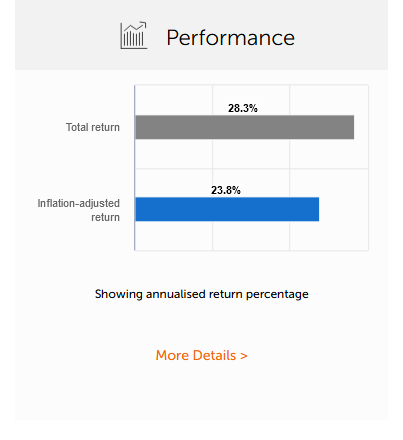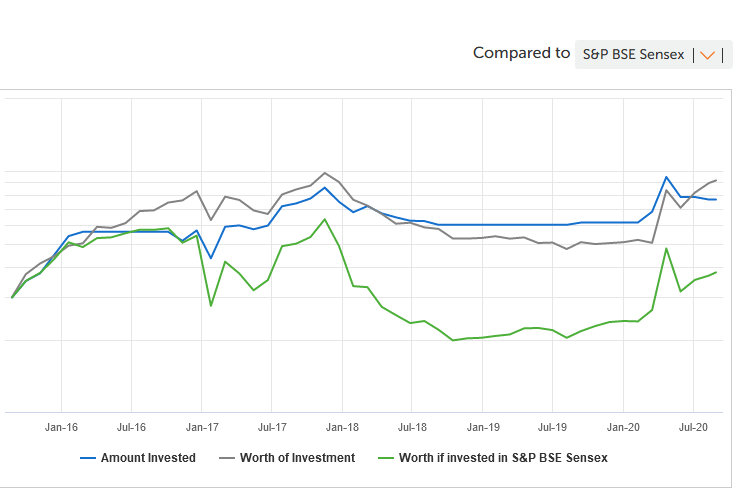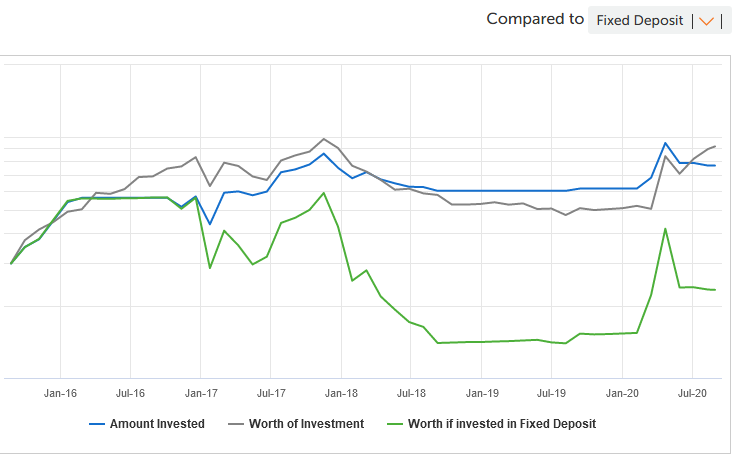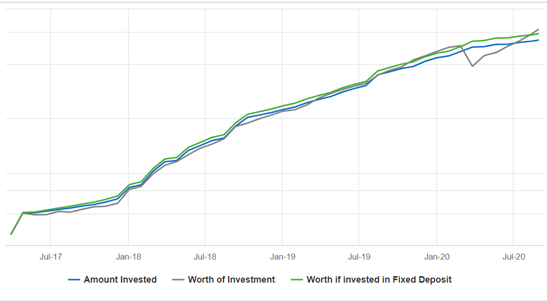After spending a decade (on & off) on speculative trading and losing a ton of money in the US and Indian stock markets, I had had enough and concluded to stay away from stock market for good. I had tremendous beginner’s luck and that proved my downfall. That initial overconfidence led to increasingly risky bets with unfavourable results. Subsequently, the urge to recover the lost money made me place many ‘Hail Mary’ bets using Options puts and calls. Not only did I lose money, it took a toll on my health as well. This pattern continued (again on & off) for many years after my marriage.
However, my good wife stopped me from exiting the markets completely and extracted a promise to explore long-term investing only. So, I decided to take a year off to study value investing and risk management. I had studied technical analysis and other trading strategies earlier, but not value investing. I re-entered the stock market again in Aug-2015 after my 1-year study break. Since then I have meticulously tracked all of my equity and ETF investments, first using Google Finance and later using ValueResearchOnline’s portfolio tracking tool.
Since Aug-2015, I have made a total of 200+ equity and ETF transactions (Buys and Sells) in the Indian markets and earned 28.3% CAGR (pre-tax and post-commissions) on my equity and ETF investments. ValueResearchOnline reports that inflation-adjusted returns is 23.8%. This includes estimated dividend returns as well. All these gains, despite demonetization, Bank NPA crisis, lower GDP and coronavirus crisis. Also, I bought and renovated two apartments in Bengaluru during this 5-year period which reduced my buying power at opportune times. I also slept well during this period without worrying too much about what’s happening daily in the stock markets.

My stock valuation and business analysis skills are sub par. I cannot hold a candle to the regulars and experts on this forum. No, I am not being modest. I read equity analysis and follow stock recommendations from a select few experts on this forum and fund managers. If their analysis feels right, I invest.
So, how did I succeed? I attribute my success to risk management. Here are a few simple rules that helped me reduce risk:
#1 Long term investing only
I had only one rule to begin with: All my investments will be held for at least one year, regardless of whether it makes/loses money. This ensured that I won’t place any ‘Hail Mary’ short term bets. This rule has cut both ways, but it has helped me avoid speculation. It helps with position sizing. It also helps to pay less tax on capital gains.
How many of us impulsively buy stuff on Amazon only to cancel or return the items? What if cancellation or returns weren’t allowed? We would put more thought before buying them, right? We wouldn’t splurge either.
#2 Pay attention to market PE/PB/DY/VIX
Based on further reading and discussions on this forum, I added another rule (in 2018) to invest only when the PE of market index goes below historical mean + 1 SD. It fit well with my first rule and cut down my equity investment risk drastically. So I made no equity/ETF investments between Feb-2018 and Mar-2020 (except for a minor equity investment in Aug-2019). Thanks to @jamit05, @valuestudent and @deevee for continuously talking about market valuation. @Pattu’s article on market timing using NIFTY PE was the final argument that convinced me to sit on my hands when markets are overvalued. Like he suggests, market timing strategies are for reducing risk, not increasing returns.
I am also a big fan of VIX. I love investing when VIX spikes beyond 30, the sky is falling and everything’s on clearance sale. Who doesn’t love deep discounts? March 2020 was one recent example of this.
Another big indicator that I track is market dividend yield. IMHO, DY predicts market reversals better than PE / PB. When dividend yields are attractive, prudent investors are bound to jump in and shore up the markets. (Dividends account for 4.2% of my 28.3% returns.) DY combined with VIX is a potent signal for investing, again IMHO. You can follow Buffett’s indicator or something else. These are crutches needed for a non-expert investors (like me) to reduce risk.
#3 Invest defensively
But above all, I really understood Buffett’s ‘Never lose money’ rule. Losses have a highly detrimental effect on our mental health and future investments. I am also heavily influenced by Howard Marks’ defensive investing philosophy. I have tried to avoid the losers and the winners have taken care of themselves.
As I mentioned earlier, I follow stock recommendations and stock analysis from experts. But unlike them, I invest only when both the stock market and the stock are cheap. I don’t chase growth, I choose value. I have no FOMO. I only fear losing money, not opportunities. I don’t have an itch to make money all the time. Investing is not about generating regular income, but for long-term wealth creation.
Of course, one also needs to either start with or accumulate significant amount of cash to get excited about “not losing money” while compounding it over the long term.
#4 Position Sizing
An investor that doesn’t understand position sizing will lose all his money sooner or later irrespective of how great their stock valuation and business analysis skills are. Again, position sizing does not increase returns, but minimizes losses and helps you stay the course. I attach a very convincing study (PDF) on the importance of position sizing.
position_sizing.pdf (143.2 KB)
I invested in Jet Airways and still didn’t lose any sleep over its crash because my investment size depends on the risk involved. The question to ask before investing is “How much can I lose on this trade?” rather than “Can this investment become a multi-bagger?”
Position sizing is not the same as asset allocation or portfolio diversification, but may contribute to it.
#5 Asset Allocation
Allocating cash between debt and equity based on stock market valuation is another excellent risk reduction strategy that I use. At the moment, I don’t believe in selling equity just because the markets are overheated. However, I refrain from investing more money in equity at high market valuations.
Of course, my returns on the total cash would be less if I combined the returns from debt investments (FD, liquid funds, SGB, GOI bonds etc.). So, a ‘fully invested in the stock market at all times’ expert investor could earn better returns on the total cash, but the risks and drawdowns would be correspondingly high.
In Conclusion
All the gains that I have had so far could also be attributed to a good Dasha period in my horoscope (westerners call it dumb luck) instead of my investment philosophy or risk reduction strategy. It may all go poof in the next few months. Who knows? This attitude helps me continue making adjustments to my investment philosophy.
I love the portfolio tracking tool from ValueResearchOnline. Currently, I only use it to track my equity / ETF investments, but it does allow tracking of mutual funds, SIP, PPF, FD and other fixed income investments.
I am so thankful that this forum exists and continues to thrive. This post is an attempt to nudge all non-expert members to study ‘how to reduce risk’ more than ‘how to maximise returns’ (i.e., risk management more than stock valuation) to find success they deserve.




